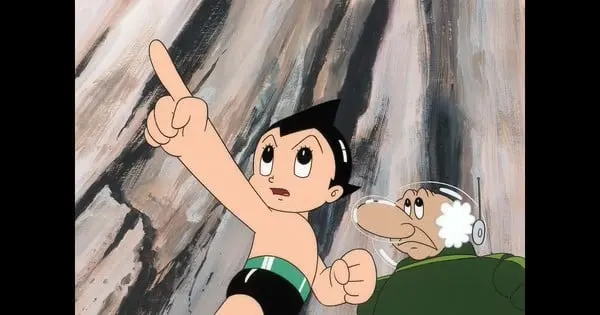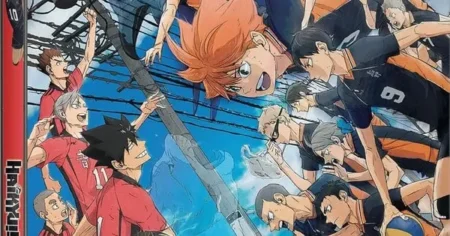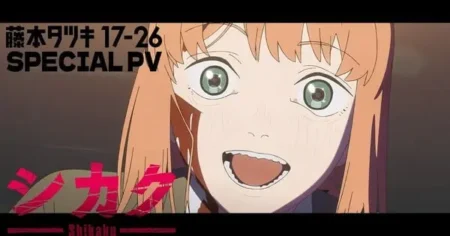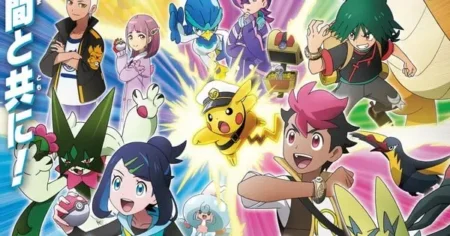In a groundbreaking move, the 1964 animated film Astro Boy: Hero of Space has been fully colorized using AI-powered restoration techniques. This marks a significant moment for fans of classic anime and animation history, offering a fresh perspective on a beloved, pioneering work.
Astro Boy: A Cultural Icon
Astro Boy (Tetsuwan Atomu) holds a special place in the history of anime and manga. Created by Osamu Tezuka, often hailed as the “God of Manga,” Astro Boy debuted as a manga series in 1952. It wasn’t long before Astro Boy transitioned to television, becoming Japan’s first half-hour animated TV series in 1963. The series quickly gained international popularity, introducing anime to a global audience.
A Pioneer of Japanese Animation
Astro Boy was revolutionary in its time, establishing many of the visual and storytelling conventions that would come to define anime. Tezuka’s innovative animation techniques, developed at his Mushi Production studio, helped to shape the aesthetics and production methods of early anime. The series tackled themes of humanity, technology, and the relationship between humans and robots, resonating with audiences of all ages.
Astro Boy: Hero of Space (1964)
In 1964, Astro Boy: Hero of Space (Tetsuwan Atomu: Uchū no Yūsha) was released as the franchise’s first animated feature film. The film was a compilation of episodes #6, #56, and #71 from the first Astro Boy television series, incorporating footage from the first three episodes and some new animation. As a result, the original theatrical release featured a mix of monochrome and color sequences.
The AI Colorization Project
The decision to colorize Astro Boy: Hero of Space using AI technology represents an exciting development in the preservation and restoration of classic animation. The project was undertaken by Tezuka Productions, with NHK (Japan Broadcasting Corporation) playing a key role in the broadcast of the colorized version.
Restoring a Classic with Modern Technology
The restoration project utilized state-of-the-art AI techniques to colorize the black and white portions of the film. According to NHK, the film was “fully colorized with restoration techniques using AI.” The colors of the original manga served as a reference for the colorization process, ensuring that the new version remained faithful to Tezuka’s original vision. The restoration also enhanced the color in scenes that were already in color, resulting in a more vibrant and visually appealing experience.
AI’s Role in the Process
While Tezuka Productions’ initial announcement did not explicitly mention AI, NHK later confirmed its use in a blog post. The broadcast also included a short “making-of” segment that highlighted the use of “AI-based restoration techniques.” The specific type of AI used in the project, whether it involved generative AI or other methods, has not been disclosed.
The Impact of AI Colorization
The AI colorization of Astro Boy: Hero of Space raises several important questions about the role of technology in preserving and revitalizing classic films.
Accessibility and Audience Engagement
Colorization can make older films more accessible to modern audiences, who may be less accustomed to watching black and white content. By adding color, the film can gain renewed interest and appeal to a wider demographic. Colorization can also enhance the emotional impact of a film, bringing a new dimension to the storytelling.
Historical Preservation vs. Artistic Integrity
The use of AI colorization raises concerns about historical preservation and artistic integrity. Some argue that classic films should be left in their original black and white format, as this reflects the artistic choices of the filmmakers and the historical context in which they were created. The decision to colorize a film can be seen as a form of alteration that changes the original work.
The Accuracy of AI Colorization
Another concern is the accuracy of AI colorization. While AI algorithms have made significant progress in recent years, they are not always able to perfectly replicate the colors that would have been used in the original production. The colors chosen by the AI may be based on assumptions or limited data, potentially leading to inaccuracies.
Ethical Considerations
The use of AI in film restoration raises ethical considerations. Some historians and film enthusiasts argue that AI can create information that was not present in the original film, potentially distorting the historical record. There is also a concern that AI could be used to alter films in ways that are not faithful to the original intent of the filmmakers.
The Broader Context: AI and Animation
The Astro Boy colorization project is part of a broader trend of using AI in animation and film restoration. AI is increasingly being used for a variety of tasks, including:
Image and Video Colorization
AI algorithms can automatically colorize black and white images and videos with impressive results. These algorithms use deep learning techniques to identify objects and determine appropriate colors based on comparative analysis. While AI colorization works well for natural images, it can be more challenging for complex digital art and animations.
Automating Animation Tasks
AI tools can automate repetitive and time-consuming tasks in animation, such as rendering, in-betweening, and cleaning up drawings. This allows animators to focus on more creative aspects of the production process.
Style Transfer
AI algorithms can transfer the color grading style of one film to another, allowing filmmakers to achieve a specific visual aesthetic. This can be useful for creating a cohesive look in sequels or series.
VFX and Special Effects
AI-driven VFX tools can automate the creation of realistic animations, simulate natural phenomena, and remove unwanted objects from footage, reducing time and cost.
AI-Assisted Colorization Tools
Several AI-powered tools are available to assist artists in colorizing line art and sketches. These tools often allow users to upload reference images to guide the AI’s color choices and style.
The Future of AI in Animation
As AI technology continues to advance, its role in animation and film restoration is likely to grow. AI has the potential to:
Enhance Efficiency
AI can streamline the animation production process, reducing the time and cost required to create animated content.
Improve Quality
AI can assist artists in achieving higher-quality results with greater precision.
Enable New Creative Possibilities
AI can allow artists to experiment with different effects and styles that would have been difficult or impossible to achieve with traditional methods.
Personalize Content
AI can be used to create more personalized and immersive experiences for audiences.
The Human Element
While AI offers many benefits, it’s important to remember that animation is a creative art form that requires human intelligence and artistry. AI should be seen as a tool to assist artists, not replace them. The nuanced creative choices that bring animated stories to life still require a human perspective.
A Contentious Issue: The Debate Over Colorization
The colorization of classic films remains a contentious issue. Some argue that it is a valuable way to preserve and revitalize these films, while others believe that it diminishes their artistic and historical significance.
Arguments for Colorization
- Increased Accessibility: Colorization can make classic films more appealing to modern audiences who may not be accustomed to black and white.
- Enhanced Emotional Impact: Color can add a new dimension to the storytelling, enhancing the emotional impact of the film.
- Preservation: Colorization can help to preserve classic films by making them more accessible and ensuring that they are not forgotten.
Arguments Against Colorization
- Artistic Integrity: Colorization alters the original artistic vision of the filmmakers, potentially changing the intended look and feel of the film.
- Historical Accuracy: AI colorization may not always be accurate, potentially distorting the historical record.
- Devaluation of Black and White Art: Colorization can devalue the artistic merit of black and white cinematography, which is often used to create specific moods and effects.
- Ethical Concerns: The use of AI to alter films raises ethical concerns about the potential for manipulating historical artifacts.
Conclusion: A New Look at a Classic
The AI colorization of Astro Boy: Hero of Space is a fascinating example of how technology can be used to breathe new life into classic animation. While the project raises important questions about artistic integrity and historical preservation, it also offers an opportunity to introduce a new generation to the work of Osamu Tezuka and the origins of anime. Whether you embrace it or remain skeptical, this colorized version is sure to spark conversation and renewed appreciation for a true animation pioneer. The AI revolution continues to transform creative industries, and the future of animation promises to be an exciting blend of human artistry and technological innovation.









